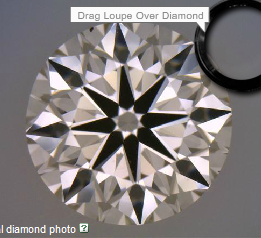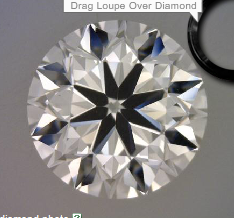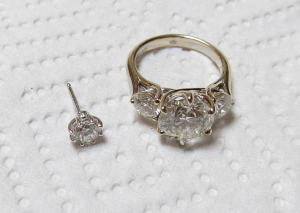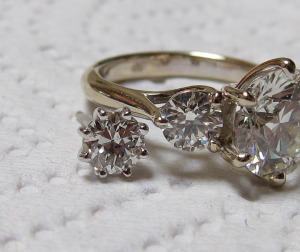Hello,
I've been a bit skeptical of the HCA (weeding out some great diamonds and letting others through). This may be a really silly question with an obvious answer but I've just been playing around with some angles and I'm still confused with the system I understand its a blunt tool to weed out diamonds, but can't help but think that some diamonds get further investigation that shouldn't and others that could be great diamonds don't.
I understand its a blunt tool to weed out diamonds, but can't help but think that some diamonds get further investigation that shouldn't and others that could be great diamonds don't.
Okay, so I put in a range of pavilion and crown angles (some silly I know)
39.8 pavilion 39 crown HCA score 1.4
40 pavilion 39 crown HCA score 1.3
40.2 pavilion 37 crown HCA score 1.3
39.6 pavilion 35 crown HCA 1.7
41/34 gets an HCA of 1.3 then..
41.2 pavilion 33.5 crown HCA score 2.3 (would be disregarded)
41.2 pavilion 34 crown HCA score 2.8
41 pavilion 35 crown HCA score 2.1
41.4 pavilion 33 crown HCA score 3
What confuses me the most is that all the stones that scored above 2 (in the 41ish group just based on pavilion and crown angles are candidates for AGS0 ideal diamonds and GIAex) on the other hand those that fall below 2 are either poor, fair or VG diamonds (just based on the angles for AGS and GIA).
I understand AGS updated their parameters after the HCA was created, and I've read in threads the Gary Holloway had thought that the new cut guidelines would be more in line with the HCA, but from these examples that doesn't seem to be the case.
I'm hoping someone will be able to shed some light on this.
I've been a bit skeptical of the HCA (weeding out some great diamonds and letting others through). This may be a really silly question with an obvious answer but I've just been playing around with some angles and I'm still confused with the system
Okay, so I put in a range of pavilion and crown angles (some silly I know)
39.8 pavilion 39 crown HCA score 1.4
40 pavilion 39 crown HCA score 1.3
40.2 pavilion 37 crown HCA score 1.3
39.6 pavilion 35 crown HCA 1.7
41/34 gets an HCA of 1.3 then..
41.2 pavilion 33.5 crown HCA score 2.3 (would be disregarded)
41.2 pavilion 34 crown HCA score 2.8
41 pavilion 35 crown HCA score 2.1
41.4 pavilion 33 crown HCA score 3
What confuses me the most is that all the stones that scored above 2 (in the 41ish group just based on pavilion and crown angles are candidates for AGS0 ideal diamonds and GIAex) on the other hand those that fall below 2 are either poor, fair or VG diamonds (just based on the angles for AGS and GIA).
I understand AGS updated their parameters after the HCA was created, and I've read in threads the Gary Holloway had thought that the new cut guidelines would be more in line with the HCA, but from these examples that doesn't seem to be the case.
I'm hoping someone will be able to shed some light on this.











300x240.png)